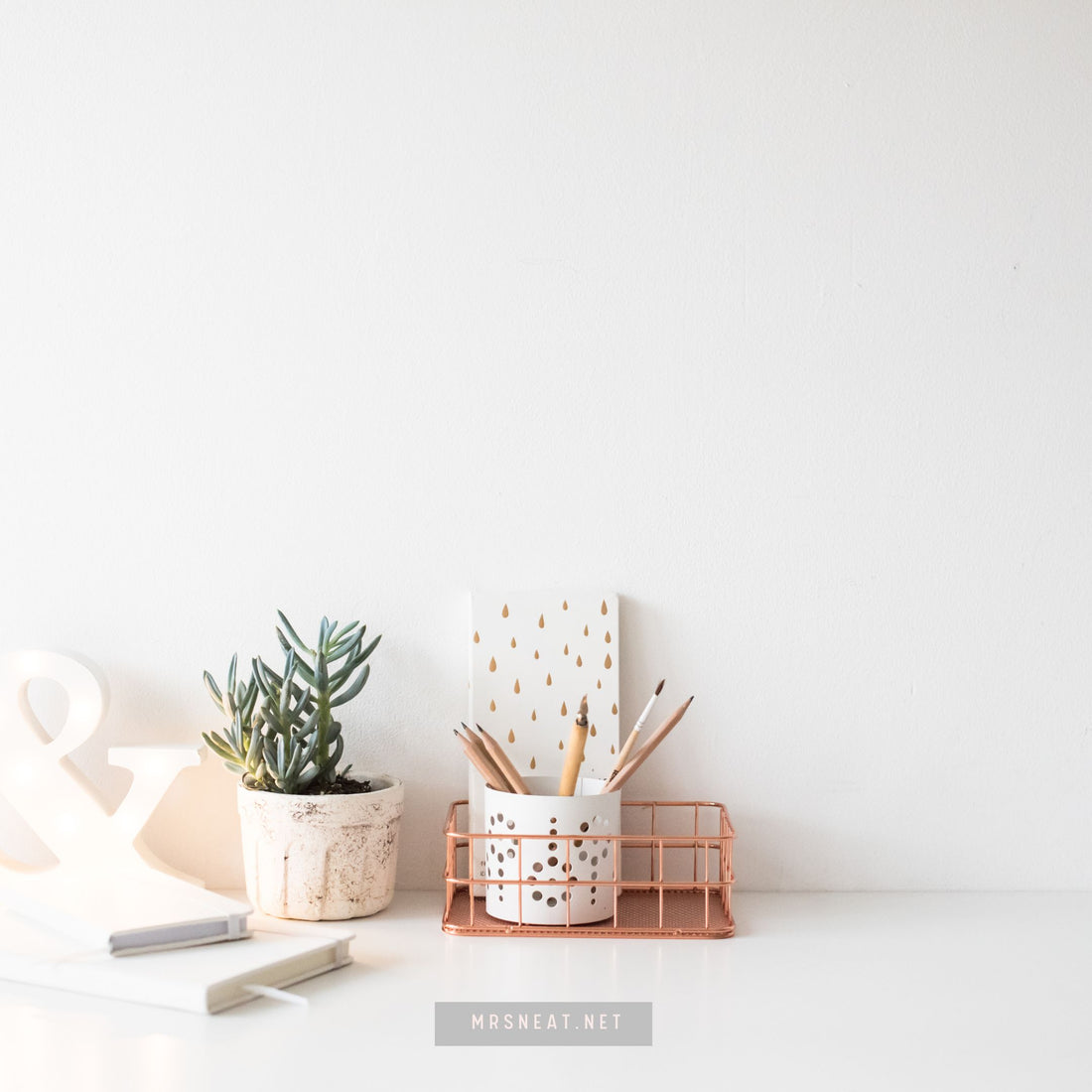
10 Reason Why You Need Weekly and Monthly Planner and How to Use Them
maris wariShare
Time management is one of the biggest challenges even for the most talented and motivated people.
It is a fact that the productivity levels vary from day to day, and modern tools that are supposed to help us work better and faster can be turned against us – think of all the time you lose checking your email every day or giving up to guilty pleasures like shopping online.
Sounds right?
If you said yes, then a weekly and monthly planner can be of great help.
It is effective in helping you stay focused on your most important tasks.
Maximize your productivity by using a Weekly and Monthly planner!
By using this combination of both you'll have an easy overview of important events and tasks to complete.
Using a weekly and monthly planner allows you to start with the monthly big picture goals and plans.
Then, break it down into achievable weekly and daily tasks to achieve those goals.
For me, I start with larger goals and work downward from monthly to weekly and daily, it will help me achieve the goals I want rather than checking off to-do items that have nothing to do with my goals.
And in the rest of article, I'll give you how to use a weekly and monthly planner for an organized and productive life.
If you never try using weekly and monthly planner,
Here’s 10 reasons why you need weekly and monthly Planner
1. You Can Keep Track of All Responsibilities Anywhere
A weekly planner can be a handy tool, you can choose a printed planner or digital planner that can be accessed from any devices, including your notebook, tablet or even smartphone.
2. You Get Used to Focus on Important Activities
Do you feel like any activity on your schedule is urgent?
It’s a common feeling, and this happens when you forget to prioritize activities by importance.
Sometimes, it becomes quite difficult to manage all the tasks of the day, and if you don’t have your priority tasks on top of the list, then it can seriously hurt your performance and productivity.
With weekly and monthly planner will allow you to keep the most important activities visible at all times.
3. You’ll Increase Your Productivity
Productivity is quite necessary if you want to hit the deadlines of the projects because if you lack productivity then you won’t be able to finish your target on time.
According to some grim statistics, only 45% of the time people spend at work is, used for completing primary job duties.
It clearly shows how much time employees waste in only their main job.
To do list task from your weekly planner will help you avoid procrastination at work and you will certainly stop wasting your valuable time, by investing it in being productive.
4. You’ll have a Feeling of Accomplish
The feeling of accomplishment after completing all the tasks by the end of the week and month does not only satisfy you but keeps you motivated towards work.
It boosts your interest at work so that you can accomplish any complicated task with ease.
Each time you check off an activity in your monthly and weekly planner or mark it as complete, you’ll feel closer to attaining your goals and get a sense of achievement.
It’s a well-known fact that you enjoy your leisure time more when you know you’ve done your job!
5. Makes you Stress-Free
Stress can easily kill the productivity.
When you have too much on your plates, then it becomes extremely difficult for you to finish all of them because of the hectic schedule.
Your monthly planner helps you plan important events and break it down into weekly and daily tasks so that you don’t have to deal with the anxiety and fear of failing to meet your obligations.
6. Provides More Time for Creative Things
If you don’t have an organized work calendar, then taking time out for other important activities becomes a dream.
That’s why it is essential to utilize a tool that helps you organize your entire weekly tasks.
Using a Weekly Planner, you work according to the planned working schedule which helps you divide your time efficiently among all your tasks.
It enables you to complete tasks within time so that you can have free time for other creative things that you like the most.
7. Enables you to Break Large Goal into Small Tasks
Applying small tasks to big goals makes them easy to achieve.
You won't be scrambling at the last minute because you forgot to add them to your to-do list.
The monthly and weekly planner go hand-in-hand and it's important to have them both to help you set life goals and achieve them.
8. Helps you to View Weekly Targets
When you know your entire weekly tasks before starting the week, then you have enough time to plan them the best way.
It gives you the freedom to schedule your tasks in such a way that you can accomplish them on time.
According to a study conducted by the Dominican University of California, writing all your goals helps to achieve them more successfully.
So, if you make use of a weekly planner to write all your weekly goals then the probability of accomplishing them will be much higher.
9. Helps you to Quickly Spot Overdue Tasks.
Sometimes, the tasks that remain undone get missed out because you get busy with other activities.
To make this job easy, Weekly Planner is an ideal choice.
It makes all the overdue tasks visible so that you can identify them in a flash.
10. Helps to Improve Your Workflow
When you work from home, then you have to divide your time effectively around personal and work because if you spend a lot of time on one part and give less time to others, then you can’t give equal attention to personal needs and professional work.
A weekly planner provides you with all these insights so that you can plan things strategically and reach all your targets with ease. It enables you to develop an excellent workflow using which you can assign the right time to each purpose.
How to Use Weekly and Monthly Planner
Set Up the Planner
Before you grab any old pen and just start writing in a new planner, take a few minutes brainstorm and decide how you want to use this planner and the goals you have for it.
Are you using this planner for personal, career, business, or family activities?
Do have a lot of meetings to track or lots of to-dos?
Thinking through how you will use this planner before you start writing in it is really helpful and insures you won't have "setup regret" later.
What's important to remember about your planner is that there are no rules.
How you set it up is unique to YOU and meant to help you achieve your goals and plans, not anyone else's.
Prepare the materials
Decide what tools you are going to use ahead of time.
Once you print your printable planner, are you going to use one color pen?
Are you going to color code important dates/activities?
Do you like to write your plans in one color and the kids' plans in different colors?
Do you write business plans in one color and work appointments in another?
Do you like to use stickers, washi tape, etc.
Do you want to decorate your planner or do you keep a more minimalist approach? or
Do you want to use it digitally using your computer, tablet or smartphone.
Start to use Monthly Planner
Begin working in your planner by thinking of the year as a whole.
Go to each month and write in important dates such as birthdays and anniversaries.
You can also add Federal holidays.
Next write in your upcoming events such as vacations, sporting events, concerts, parties, and travel plans.
Last but not least, use the monthly planner to set goals.
Are you trying to lose weight?
Save more money?
Master a new skill?
Grow your social media follower?
Career improvement? or
start a new businesses?
Plan out your goals and then note where you want to be for these each month. It's a great way to track your progress.
By looking at your year as a whole and then breaking it down, month by month, week by week, and day by day, you'll be able to set goals and then create a plan to achieve them.
Next use Weekly Planner
Now that you've filled in the monthly calendar, go into the weekly spread and fill in the same information.
It may seem redundant, but it's not.
In the weekly planner, we're going to break those items out and then add the tasks that are needed to complete each goal.
Here's some my goals and how I make them happen :
1. Lose 8 pounds a month. That's two pound a week.
What tasks will I need to add to my to-do list each week to achieve that goal?
I did exercise 3 times a week.
Add workout to those days and then I am putting tasks into place to achieve that overall goal!
I use this daily fitness planner to help me keep on track on my goal.
2. Saving money
I want to save $3000 for 2 months.
That is $1500 per month.
I use this piggy bank saving challenge to tracking my savings for 2 months.
To achieve that goal, I decide to not buy Starbuck every morning instead, I brew my own coffee using my espresso coffee maker.
And I choose to cook my lunch instead of buying one.
I use this recipe planner to help keep my recipe organized.
Making these changes will allow me to achieve my goals effortlessly while tracking them in my weekly planner and in my saving challenge.
3. Social media goals
I really want to grow my Tiktok followers.
So, in my monthly planner I want to gain an additional 100 followers.
Now in the weekly and daily goals I'll need a plan to achieve that goal.
To achieve them, I put in my to-do list to following 20 people/day.
Commenting on non-follower posts 10 times/day and posting 3 times/day.
These are the actionable steps that I can do to achieve my monthly goal.
They are all easy to do on a day-to-day basis.
Often when you start with an overall goal for the year and month, it seems unobtainable.
But, if you break it down into step-by-step easy tasks it makes that huge goal effortless to achieve!
How to Use Weekly and Monthly Planner Together
I used to have a really hard time understanding the difference between a monthly and weekly planner.
I thought, why am I putting the same information in both places?
Really, you aren't putting the same info in both places.
Think of your monthly layout as a place to QUICKLY glance at plans and goals.
The weekly layout allows you to FOCUS on the tasks that are needed to achieve those goals and plans.
In other words, the monthly layout is not a place for tasks! Monthly planner is to set goals and events.
For example, If you have an upcoming holiday such as Halloween.
You'll need schedule the time to choose a costume, buy candy, or go trick-or-treating.
On your monthly planner is the date of The Halloween event.
Then using the weekly planner to plan the tasks to schedule the time to choose a costume, buy candy, or go trick-or-treating.
In the Monthly Planner, I focused a lot on goals and events.
Another example, you have some events coming up.
One of the things you have on your monthly planner is Maria's surprise birthday party on Dec 9.
Now using the weekly planner, you'll be able to apply tasks for that event such as:
- Buy Gift for Maria
- Make appetizer for Maria's party
- Blow up party balloons
Applying tasks to events, goals, and priorities makes them easy to achieve.
You won't be scrambling at the last minute because you forgot to add them to your to-do list.
Related content;
- Mastering Time Management with a Weekly Planner Template
- Master Your Time with Daily & Weekly Routine Planner for Productivity & Success
- Unleash Your Full Potential with Daily and Weekly To-Do List Printable Planners
The monthly and weekly planner go hand-in-hand and it's important to have them both to help you set life goals and achieve them.
I hope this post helped you to understand the importance of a weekly and monthly planner and how to use it.
Do you interest to try having Weekly and Monthly Planner?








 https://www.linkedin.com/in/mariswari/
https://www.linkedin.com/in/mariswari/



